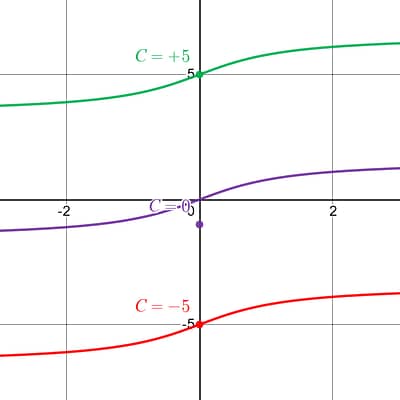Example 1: Indefinite Integral Inverse Trig
|
|
|||||
|
Step 1: Simplify and look for algebraic rewrites. None in this example. |
|
||||
|
Step 2: Identify any term(s) that include one of the six inverse trig function special cases. Here you have 1 chunk, and it is one of the inverse trig function special cases. |
|
||||
|
Step 3: Take the antiderivativeof the inversetrig function special cases using their specific Recipe.
Chunk 1: |
DO NOT FORGET THE +C |
||||
|
Final Result Meaning: Remember the Definite Integral will always provide you a definite value , and the Indefinite Integral provides you a family of solutions . |
The antiderivative of the equation is the family of graphs .
All graphs of the form have the same derivative (instantaneous rate of change), , at any x-value . The only difference between any of original graphs, , is just a vertical shift of +C . In the graph above are examples of 3-different C-values. You can see the instantaneous rate of change ( slope ) is the same at every x-value between all the different examples, no matter the +C . |
||||

